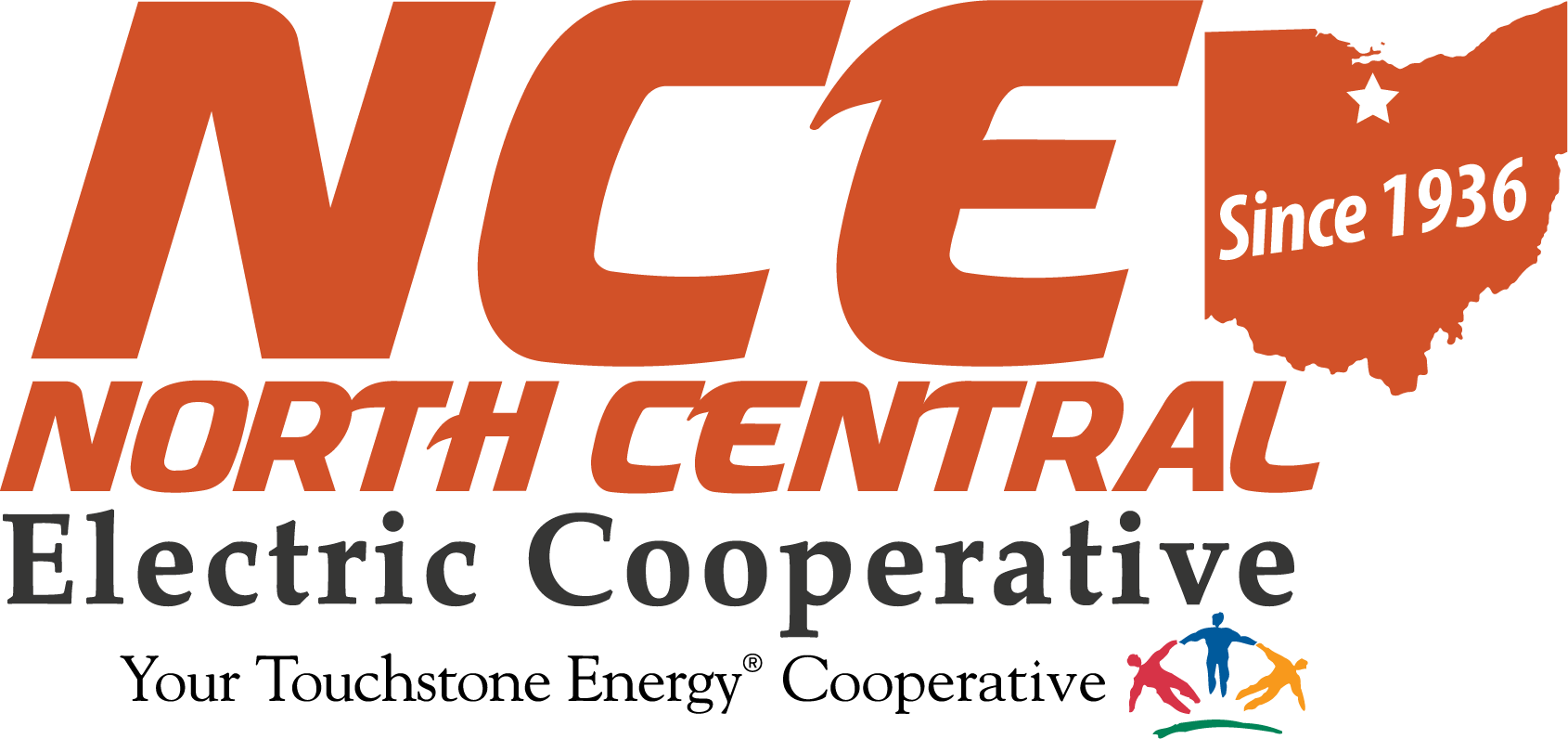As a distribution cooperative, North Central Electric Cooperative does not actually generate the electricity used by the members in their homes and businesses. Every month, NCE pays a power bill to Buckeye Power. The co-op’s power bill for Buckeye Power is based on two major components: energy and demand.
Energy (kWh)
The basic measure of electric energy that members use is kilowatt-hours, or kWh. For example, a 100-watt lightbulb consumes 100 watts per hour. If that bulb is left on for ten hours it will consume 1 kWh. NCE pays Buckeye Power based on the number of kilowatt-hours consumed over the entire month and across the entire NCE service territory.
Demand (kW)
Demand is measured in kilowatts or kW. kW is the basic unit of electric demand and is equal to 1,000 watts. If ten 100-watt bulbs are left on for an hour, that residence is still consuming one kWh but it is placing a 1 kW demand on the wholesale power provider by having all of the bulbs on at once. Every month, nearly half of NCE’s power bill to Buckeye Power is based on the kW demand the co-op is placing on Buckeye Power during a single 15-minute monthly coincident billing peak.
Load management
The cooperative uses a number of methods to manage our “load,” or the amount of electricity we are using at any one time. NCE is able to reduce wholesale power purchases by managing loads from appliances like air conditioners and water heaters during periods of high demand so all of these appliances aren’t running at the same time. Managing these loads allows us to adjust our electricity demand, which saves money and resources for the cooperative and its members.
When this occurs, you may see messages on our website, Facebook page and/or SmartHub that we have been notified by our power supplier, Buckeye Power, that they expect load control today around a certain time. This will only affect those North Central members who have electric water heaters equipped with Load Control Switches, members who signed up to have air conditioners equipped with "Cool Returns' switches, and members who signed up with heat pumps, geothermal systems, and central air conditioning system switches.
We would like to give a special thank you to the members that signed up for these programs to help keep demand and costs low. For more information about these programs, please visit: https://NCE.org/rebates-programs
The load management program is operated by Buckeye Power and has been in operation since 1959. The program has saved Ohio electric cooperative members more than $5 million in wholesale power costs. More than 400,000 different electric loads at homes, farms and businesses throughout the state are connected to the system. These loads include electric water heaters, air conditioners, grain bin fans, and irrigation systems. NCE members who participate in our load management program are eligible for special rebates and electric rates.
When electricity demand rises toward a new peak, Buckeye Power initiates control through a highly sophisticated system that communicates with receivers connected to the various appliances. Electricity demand is kept under control, and costs stay down for everyone. Demand rates and the billing peak In addition to our load management program, NCE uses a variable rate structure. The components of our different rates reflect the way NCE is billed every month by Buckeye Power. Several members have a rate structure that includes an energy charge (kWh), coincident demand charge (kW), capacity charge, and facility charge.
NCE has a professional energy advisor on staff to answer any questions you have about load management and how you can participate to save money on your energy bills. Please contact your Energy Advisor today at 419-426-3072.
